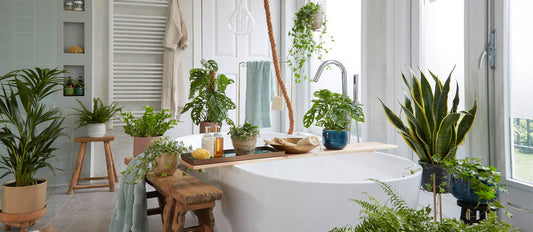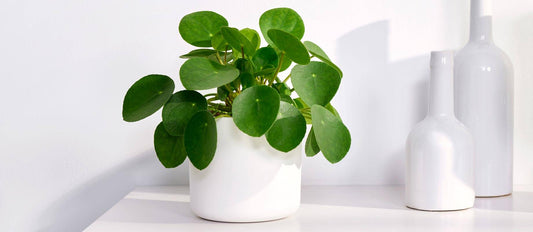Bushy and uplifting, ranging from dark to silvery green and available in many shapes: ferns! They are back on trend. There are many different types with different leaves. One may have curled leaves, the other might be rather frilly and a third may not have any feathering to it at all. Together these ferns make for an appealing group of green houseplants that will fit perfectly in any home with a bit of botanical flare. Ferns are really back in style and look cool indoors and outdoors. As a bonus, ferns also help provide your house with healthier air.
Popular ferns
There are ferns in all kinds of types, sizes and colours. The best-known type is the Nephrolepis, also called the sword fern. With its springy, bright green leaves, this plant adds a cheerful touch to your room. In tests, Nephrolepis was found to be the best air-purifying plant. Compared with all other houseplants, this fern absorbed the most pollutants. Other ferns also have air-purifying properties. This means that the toxic particle in the air is absorbed by the plant and converted into clean oxygen. The bird's nest fern (Asplenium) and the blue star fern (Phlebodium) are two other types of ferns that have scored well in these studies. The staghorn fern is another well-known type of fern. At first glance, this type does not resemble the other types. Its strong leaves that stick upwards in rough shapes make it look a bit like a deer's antlers. Fern species with harder, stiffer leaves are easier to care for, because less moisture evaporates. Bird’s-nest and staghorn ferns make exceptional hanging plants.
Fern Care
As with any other houseplant, you always need to take the amount of light, water and food into consideration when growing ferns. Ferns thrive in bright spaces, but not in full sun. So put the plant in a place with plenty of indirect sunlight. The plants like high air humidity, so it's not a great idea to put them on the windowsill above the heater. The plant feels at home in the kitchen or bathroom. If you do want to put the plant somewhere where it is somewhat drier, make the air around the plant a bit more humid. You could put a container of water around or next to the flower pot, for instance. The water will evaporate and humidify the air. Spray your fern's leaves every few weeks, as well. And keep the root ball moist at all times. Pour the water onto the potting soil around the plant and not into the centre of the plant itself. Make sure not to overwater it. If the plant's roots are wet, they can rot. We also give ferns houseplant food. Do this once every four weeks during the growing season, from spring until about September. Are there yellow or withered leaves on the plant? Trim them off, so the plant can direct its energy to the leaves that are alive.
Outdoor ferns
Some ferns are ideal for growing as a garden plant. These tend to be different ferns than the ones you'll find in your living room. Some types of ferns that grow well in the garden are: the hart's-tongue fern (Asplenium scolopendrium), Northern maidenhair (Adiantum pedatum) and holly fern (Cyrtomium). These ferns are winter hardy and stay green all year round. This makes them an ideal green foundation plant for your garden. So, there is a clear distinction between indoor ferns and garden ferns. Make sure to read the information on the website carefully before you order your new fern.
Would you like a fern for inside your home?




